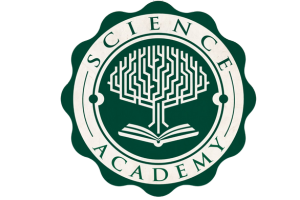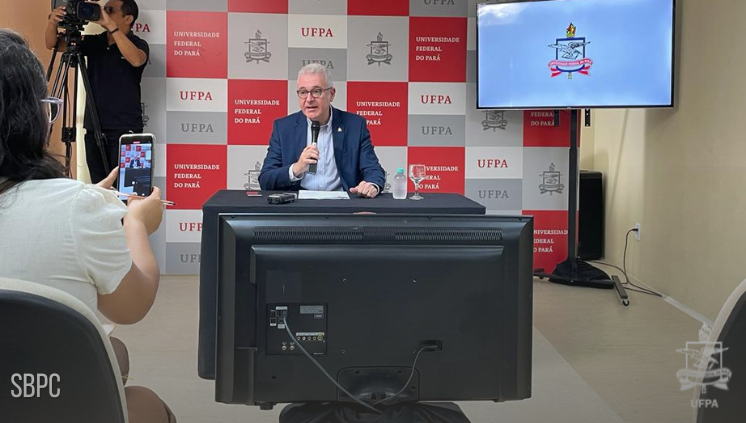Federal University of Pará (UFPA) Hosts the Largest Scientific Event in Latin America in Belém
The Federal University of Pará (UFPA) in Belém will host the largest scientific event in Latin America starting this Sunday (7). According to the organizers, the 76th annual meeting of the Brazilian Society for the Advancement of Science (SBPC) is expected to attract over 35,000 people.
In an interview with g1, Rector Emmanuel Zagury Tourinho states that all activities in the SBPC programming are free and open to the public.
“It’s very important for the public to know that participation is free. Everything here is completely free for anyone who comes to visit. No one needs to pay an entrance fee to participate,” assures the rector.
This year’s 76th edition is themed “Science for a Sustainable and Inclusive Future: For a New Social Contract with Nature” and will take place from July 7 to 13 at the Guamá campus of UFPA.
What is the SBPC Annual Meeting?
Founded in 1948, the SBPC is a civil society organization focused on advocating for scientific and technological progress and the educational and cultural development of Brazil.
Since 1949, the organization has held annual meetings to disseminate national scientific advancements across various fields of knowledge to the general population.
According to Emmanuel Tourinho, the annual meeting is the largest gathering of researchers to discuss their work and the relationship between research and national challenges.
“The event serves to discuss how Brazilian science can contribute to addressing our major challenges, such as climate issues, environmental conservation, public health, educational policies, and energy transition,” he explains.
Who Can Participate?
The event is free and open to everyone: scientists, researchers, students, teachers, representatives from scientific societies, authorities, professionals, and any visitors or residents interested in the presented activities.
This year, five federal ministers have confirmed their attendance: Luciana Santos, Minister of Science, Technology, and Innovation; Nísia Trindade, Minister of Health; Marina Silva, Minister of the Environment; Simone Tebet, Minister of Planning and Budget; and Camilo Santana, Minister of Education.
The meeting will bring together some of the most important scientists and representatives from society to discuss climate change and Brazil’s biomes. Philip Martin Fearnside, Nobel Peace Prize laureate for his work with the Intergovernmental Panel on Climate Change (IPCC), is among the confirmed names for the 76th annual meeting.
Rector Tourinho mentions that preparations to better welcome all participants have been underway for nearly a year. He states that 16 working committees with about 2,000 people have been created to organize the event.
“We are prepared to welcome the public. There will be health services and support for accessibility. We will have monitors with identification to assist anyone who needs help, as well as sensory accommodation rooms.”
Do I Need to Register?
As the SBPC annual meetings are open to everyone, with attractions for all ages and interests, registration is specifically for those who want to receive a participation certificate for general activities or attend mini-courses.
Those who register by July 12 through the website and complete their accreditation will receive an online participation certificate for general activities.
For mini-courses, registration can be done through a separate link.
What is the Program?
The event features over 286 activities, both in-person and virtual, including conferences, workshops, panels, roundtable discussions, mini-courses, exhibitions, and traveling fairs and museums.
In addition to the scientific debates, which are open to the public, the event also includes several parallel activities for society.
Among these parallel activities are spaces like SBPC Young, SBPC Afro and Indigenous, Infâncias Mairi at SBPC, SBPC Cultural, ExpoT&C, and Paneiro: The Space for Food Culture.
The “Infâncias Mairi at SBPC” space focuses on young children, ages 0 to 5, offering four workshops: Natural Pigment Factory, Clay Transformation, Balance Toys, Winds and The Chemistry of Soap Bubbles.
SBPC Young aims to bring basic education students and teachers into dynamic contact with scientists, science, and scientific practice.
Another novelty is that participants will be able to taste Pará cuisine at the “Paneiro: Space for Food Culture.” In this tent, visitors can not only try regional food but also learn about the history and traditions behind some dishes.
On Saturday, July 13, the event will feature another edition of the Family Day in Science. Participants will have the chance to explore interactive science and technology activities, learn about scientific experiences, and get answers to their questions from scientists.


Leave a Reply